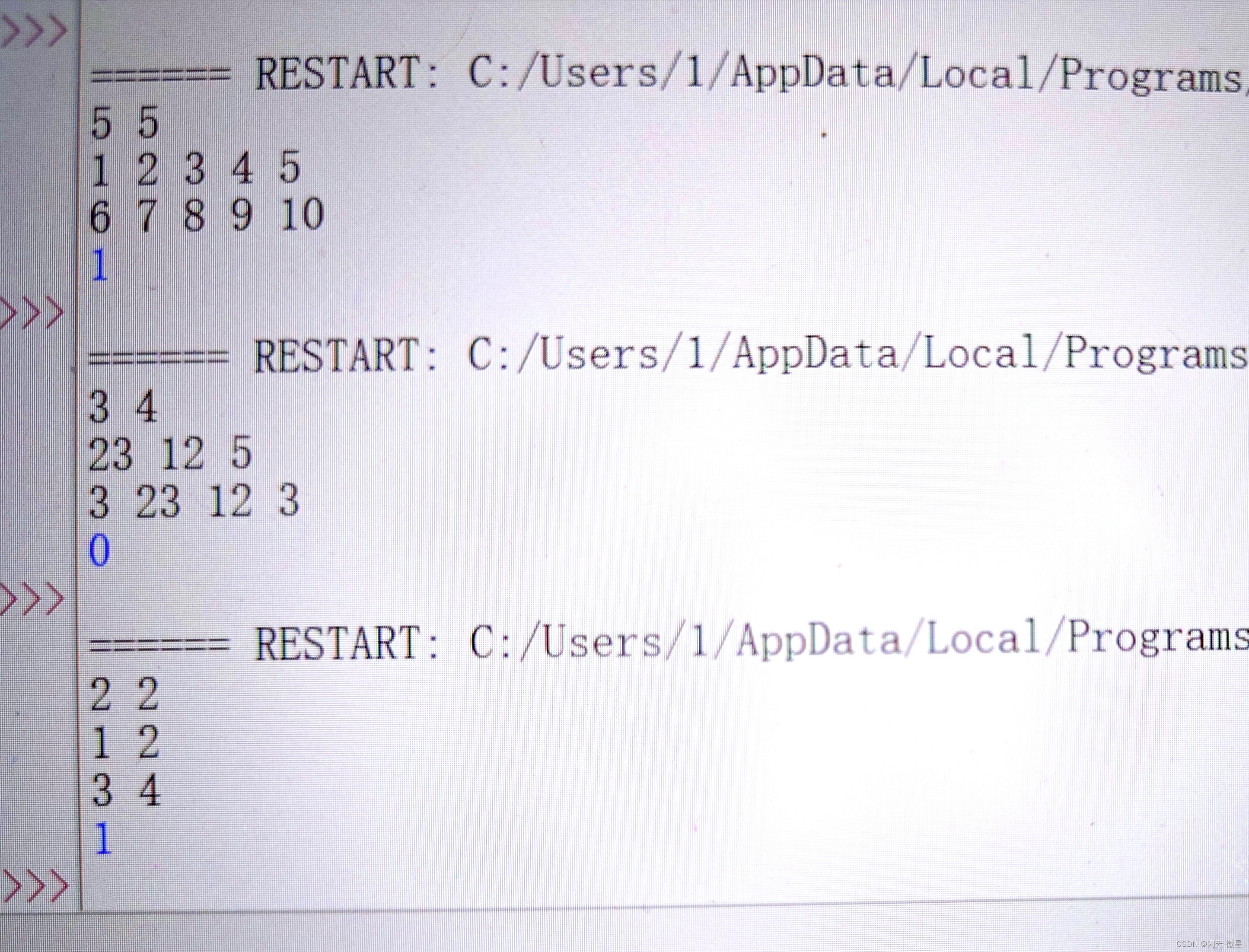前面学习了string,vector类的使用及模拟,但是它们有一个统一的特点就是底层的内存是连续的,因此迭代器的实现也很简单。现在我们开始学习list类的使用,模拟实现,来看看这个底层内存不是连续的有什么特别之处!!
list的使用
简单的list类函数这里就不在提了,若那个不太清楚,可以自行查看,或许有意外收获哦~;
list类函数的的使用
底层结构影响了什么
我们知道list的底层是不连续的,就是链表的形式,

我们还知道,迭代器的功能分为
正向迭代器 反向迭代器 固定正向迭代器 和 固定反向迭代器 四种。而
迭代器的性质也区分
- 单向迭代器:就能只能++ 或者 --;如:forward_list……
- 双向迭代器(BidirectionalIterator):既能++ 又能--;如:list,map,set……
- 随机迭代器(RandomAccessIterator):既能++,又能--,还能 + 或 - ;如:string,vector,deque……
(+ ,- 指 iterator a + 1或- 1 ,还能指向数据,这些对于底层内存连续的是能够实现的,但是对于内存分散的却不能;++ a 就是只能通过 ++a 才能实现迭代器指向数据的转变,这种不通过 + 1也能实现)
这些是由底层结构实现的,而底层结构又决定了其算法
如:std库里的sort
这里可以解释一下,这个库函数用的快排 利用三数取中 要取随机值;只要随机迭代器能实现。
std库里的reverse
std库里的generate


 通过这张图我们也能看出,随机是特殊 的双向,双向是特殊的单向,单向是特殊的input output迭代器;这种关系类似于继承的关系,如双向是符,随机是子
通过这张图我们也能看出,随机是特殊 的双向,双向是特殊的单向,单向是特殊的input output迭代器;这种关系类似于继承的关系,如双向是符,随机是子
reverse的用途
其实在list 的reverse是没有必要的;毕竟std库里的revserse都能一样,能完成其能完成的工作,把数据倒置;
emplace back 与 push back
目前可以认为 emplace back 与 push back 一样,但其实 在一定情况下 emplace back 比 push back好;大多数情况下二者都是差距很小的;
最简单的区别就是他们的用法区别
list<A> lt; A aa1(1, 1); lt.push_back(aa1); lt.push_back(A(2,2)); //lt.push_back(3, 3); lt.emplace_back(aa1); lt.emplace_back(A(2,2)); cout << endl; // 支持直接传构造A对象的参数emplace_back lt.emplace_back(3, 3);
Operations
 这一部分的类函数与前面学习的类函数使用方法稍微有一些不一样;这一部分和二叉树中堆的使用与拓展十分像,底层应该也是用堆实现的;
这一部分的类函数与前面学习的类函数使用方法稍微有一些不一样;这一部分和二叉树中堆的使用与拓展十分像,底层应该也是用堆实现的;
splice的使用
splice的翻译为汉语是 剪切,粘贴。但其实用法和其是一个意思的,把一个list的某个位置的值剪切到另一个list。

void test1()
{
list<int> l1(5, 1);
list<int> l2(5, 2);
l1.splice(++l1.begin(), l2);
l1.splice(++l1.begin(), l2, l2.end()--);
l1.splice(++l1.begin(), l2, ++l2.begin(), l2.end()--);
}remove,remove_if



nique
注意一个前提条件,他的排序必须的有有序的,因此它的描述就有了这一段话

// a binary predicate implemented as a function:
bool same_integral_part (double first, double second)
{ return ( int(first)==int(second) ); }
// a binary predicate implemented as a class:
struct is_near {
bool operator() (double first, double second)
{ return (fabs(first-second)<5.0); }
int main()
{
double mydoubles[]={ 12.15, 2.72, 73.0, 12.77, 3.14,
12.77, 73.35, 72.25, 15.3, 72.25 };
std::list<double> mylist (mydoubles,mydoubles+10);
mylist.sort(); // 2.72, 3.14, 12.15, 12.77, 12.77,
// 15.3, 72.25, 72.25, 73.0, 73.35
mylist.unique(); // 2.72, 3.14, 12.15, 12.77
// 15.3, 72.25, 73.0, 73.35
mylist.unique (same_integral_part); // 2.72, 3.14, 12.15
// 15.3, 72.25, 73.0
mylist.unique (is_near()); // 2.72, 12.15, 72.25
}merge

它的前提条和nique一样,不同的一点是,list 和 参数list 都要是有序的 使用前 要记得,调用其sort。
merge就是有两个排序好的list,把一个list内的数据 有序的插入到另一个list中,(默认是升序)
可以参考代码,自行更深的理解
bool mycomparison(double first, double second)
{
return (int(first) < int(second));
}
int main()
{
std::list<double> first, second;
first.push_back(3.1);
first.push_back(2.2);
first.push_back(2.9);
second.push_back(3.7);
second.push_back(7.1);
second.push_back(1.4);
first.sort();
second.sort();
first.merge(second);
// (second is now empty)
second.push_back(2.1); 1.4 2.2 2.9 2.1 3.1 3.7 7.1
}sort
默认是升序用的是底层 归并的排序思想。
可以用放仿函数来改变为降序
list<int> lt;
lt.push_back(1);
lt.push_back(20);
lt.push_back(3);
lt.push_back(5);
lt.push_back(4);
lt.push_back(5);
lt.push_back(6);
//less<int> ls;
//greater<int> gt;
//lt.sort(gt);
//方便点直接用匿名函数
lt.sort(greater<int>());
for (auto e : lt)
{
cout << e << " ";
}
cout << endl;list的模拟实现
基础成员函数

我们知道,链表的组成肯定要有节点,哨兵位。
节点要有一个类list_node,struct默认是public:,因此节点的组成用struct
然后就是list的成员函数的实现要有一个类
迭代器的模拟list_iterator实现要有一个类;
VS编译器底层实现list,也是类似这样的
构造函数的组成
由于list的构造函数的参数很多,因此可以多设几个重载函数来满足这个需求;
其中empty_init 的目的是增加可读性,简化步骤,毕竟很多构造函数都需要使用一样的写法;
initializer_list<T> 是要初始化 的类型为 initializer_list 的参数而出现的;注意其使用,不要不会用就行;

void empty_init()
{
_head = new Node;
_head->_next = _head;
_head->_prev = _head;
_size = 0;
}
list()
{
empty_init();
}
//初始化列表 的初始化
list(initializer_list<T> il)
{
empty_init();
for (auto& e : il)
{
push_back(e);
}
}
// lt2(lt1)
list(const list<T>& lt)
{
empty_init();
for (auto& e : lt)
{
push_back(e);
}
}
// lt1 = lt3
list<T>& operator=(list<T> lt)
{
swap(lt);
return *this;
}
list(size_t n, const T& x = T())
{
for (size_t i = 0; i < n; i++)
{
push_back(x);
}
}迭代器的实现
由于list 底层内存不是连续的,其迭代器没变办法像 string vector 一样简单的实现,因此我们要自主实现迭代器;
需要注意的点是,要明白其构造函数是什么,成员函数是什么;
主要内容就是重载 * -> == != 的符号,让其满足与其他迭代器相同的作用;这里也体现了c++的封装,就算麻烦,也要把它们使用的方法尽量一样;
这里给迭代器类 多个模板参数的原因是 简化其内容,不如写一个 iterator 类 和 const_iterator 类很麻烦。
如何理解?
模板参数就是编译器自主识别是什么类型,然后在list_iterator中 实现;
比如 编译器识别 其类型是 iterator 还是 const iterator,然后有对应的模板和模板参数,然后对于的模板类中,再有就是模板参数代替了原本的 T& T* ,其余都一样。
可以对应这没写多个模板参数的代码在深度理解一下;

template<class T>
struct list_iterator {
typedef list_node<T> Node;
typedef list_iterator<T> self;
Node* node;
list_iterator(Node* n)
:node(n)
{}
T& operator*()
{
return node->_date;
}
T* operator->()
{
return &node->_date;
}
self& operator++()
{
node = node->_next;
return *this;
}
self& operator--()
{
node = node->_prev;
return *this;
}
bool operator==(const self& i)
{
return node == i.node;
}
bool operator!=(const self& i)
{
return node != i.node;
}
};
template<class T>
struct list_const_iterator {
typedef list_node<T> Node;
typedef list_const_iterator<T> self;
Node* node;
list_const_iterator(Node* n)
:node(n)
{}
const T& operator*() const
{
return node->_date;
}
const T* operator->() const
{
return &node->_date
}
self& operator++()
{
node = node->_next
return *this;
}
self& operator--()
{
node = node->_prev;
return *this;
}
bool operator==(const self& i)
{
return node == i.node;
}
bool operator!=(const self& i)
{
return node != i.node;
}
};
参考代码
list.h
#pragma once
#include<iostream>
#include<vector>
#include<assert.h>
using namespace std;
namespace xryq {
template <class T>
struct list_node {
typedef list_node<T> Node;
Node* _next;
Node* _prev;
T _date;
//list_node(Node* n)
//{
// _date = n->_date;
// _next = n->_next;
// _prev = n->_prev;
//}
list_node(const T& date = T())
:_date(date)
, _next(nullptr)
, _prev(nullptr)
{}
};
template<class T, class ref, class ptr>
struct list_iterator {
typedef list_node<T> Node;
typedef list_iterator<T, ref, ptr> self;
Node* node;
list_iterator(Node* n)
:node(n)
{}
ref operator*()
{
return node->_date;
}
ptr operator->()
{
return &node->_date;
}
self& operator++()
{
node = node->_next;
return *this;
}
self& operator--()
{
node = node->_prev;
return *this;
}
bool operator==(const self& i)
{
return node == i.node;
}
bool operator!=(const self& i)
{
return node != i.node;
}
};
//template<class T>
//struct list_const_iterator {
// typedef list_node<T> Node;
// typedef list_const_iterator<T> self;
// Node* node;
// list_const_iterator(Node* n)
// :node(n)
// {}
// const T& operator*()
// {
// return node->_date;
// }
// const T* operator->()
// {
// return &node->_date
// }
// self& operator++()
// {
// node = node->_next
// return *this;
// }
// self& operator--()
// {
// node = node->_prev;
// return *this;
// }
// bool operator==(const self& i)
// {
// return node == i.node;
// }
// bool operator!=(const self& i)
// {
// return node != i.node;
// }
//};
template<class T>
class list {
public:
typedef list_node<T> Node;
typedef list_iterator<T, T&, T*> iterator;
typedef list_iterator<T, const T&, const T*> const_iterator;
iterator begin()
{
//return iterator(_head->_next);
return _head->_next;
}
iterator end()
{
//return iterator(_head);
return _head;
}
//如果不加 const 就会造成重定义
const_iterator begin() const
{
//iterator it(_head->_next);
//return it;
//return iterator(_head->_next);
return _head->_next;
}
const_iterator end() const
{
return _head;
}
iterator insert(iterator pos, const T& x)
{
Node* newnode = new Node(x);
Node* pre = pos.node->_prev;
Node* cur = pos.node;
newnode->_next = cur;
cur->_prev = newnode;
newnode->_prev = pre;
pre->_next = newnode;
++_size;
return newnode;
}
iterator erase(iterator pos)
{
assert(pos != end());
Node* prev = pos.node->_prev;
Node* next = pos.node->_next;
prev->_next = next;
next->_prev = prev;
delete pos.node;
--_size;
return next;
}
void empty_init()
{
_head = new Node;
_head->_next = _head;
_head->_prev = _head;
_size = 0;
}
list()
{
empty_init();
}
//初始化列表 的初始化
list(initializer_list<T> il)
{
empty_init();
for (auto& e : il)
{
push_back(e);
}
}
// lt2(lt1)
list(const list<T>& lt)
{
empty_init();
for (auto& e : lt)
{
push_back(e);
}
}
// lt1 = lt3
list<T>& operator=(list<T> lt)
{
swap(lt);
return *this;
}
list(size_t n, const T& x = T())
{
for (size_t i = 0; i < n; i++)
{
push_back(x);
}
}
void clear()
{
//auto i = begin();
auto i = begin();
while (i != end())
{
i = erase(i);
}
}
~list()
{
clear();
delete _head;
_head = nullptr;
}
void push_back(const T& x)
{
//Node* tmp = new Node(x);
//Node* tail = _head->_prev;
//tmp->_prev = tail;
//tail->_next = tmp;
//tmp->_next = _head;
//_head->_prev = tmp;
//++_size;
insert(end(), x);
}
void pop_back()
{
//assert(!empty());
//Node* tail = _head->_prev;
//_head->_prev = tail->_prev;
//tail->_prev->_next = _head;
//--_size;
//delete tail;
//tail = nullptr;
erase(--end());
}
void pop_front()
{
erase(begin());
}
void push_front(const T& x)
{
insert(begin(), x);
}
void size()
{
return _size;
}
bool empty()
{
return _size == 0;
}
private:
Node* _head = new Node;
size_t _size = 0;
};
template<class Container>
void print_container(const Container& con)
{
// const iterator -> 迭代器本身不能修改
// const_iterator -> 指向内容不能修改
// typename Container::const iterator it = con.begin(); 错误的 迭代器无法++
//typename Container::const_iterator it = con.begin();
auto it = con.begin();
while (it != con.end())
{
//*it += 10;
cout << *it << " ";
++it;
}
cout << endl;
//for (auto e : con)
//{
// cout << e << " ";
//}
//cout << endl;
}
struct AA
{
int _a1 = 1;
int _a2 = 1;
};
void test_list1()
{
list<AA> lta;
lta.push_back(AA());
lta.push_back(AA());
lta.push_back(AA());
lta.push_back(AA());
list<AA>::iterator ita = lta.begin();
while (ita != lta.end())
{
//cout << (*ita)._a1 << endl; 这样方位也行,但是为了方便 地址 直接用 -> 访问可读性更好;
// vector<T> 也有这种设计
// 特殊处理,本来应该是两个->才合理,为了可读性,省略了一个->
cout << ita->_a1 << ":" << ita->_a2 << endl;
cout << ita.operator->()->_a1 << ":" << ita.operator->()->_a2 << endl;
++ita;
}
cout << endl;
// list<int> lta;
//lta.push_back(1);
//lta.push_back(1);
//lta.push_back(1);
//lta.push_back(1);
}
void func(const list<int>& lt)
{
print_container(lt);
}
void test_list2()
{
// 直接构造
list<int> lt0({ 1,2,3,4,5,6 });
// 隐式类型转换
list<int> lt1 = { 1,2,3,4,5,6,7,8 };
const list<int>& lt3 = { 1,2,3,4,5,6,7,8 };
func(lt0);
func({ 1,2,3,4,5,6 });
print_container(lt1);
//auto il = { 10, 20, 30 };
/* initializer_list<int> il = { 10, 20, 30 };
cout << typeid(il).name() << endl;
cout << sizeof(il) << endl;*/
}
}




























